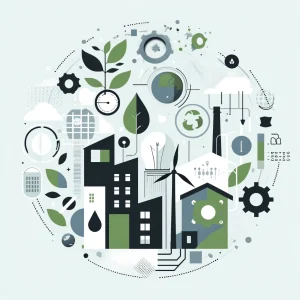Green Construction: Building with a Conscience
In today’s world, green construction is not just a trend; it’s an essential approach towards sustainable development. Building with a conscience means creating structures that not only serve their purpose but also contribute positively to the environment and human health. Here’s how the principles of green construction are applied in modern building practices.
Incorporating Eco-Friendly Materials
The choice of materials is fundamental in green construction. Eco-friendly materials are those that are non-toxic, sustainably produced, or recycled. These materials reduce environmental impact through decreased pollution, enhanced energy efficiency, and reduced waste. Examples include bamboo, reclaimed wood, recycled steel, and low-VOC (volatile organic compounds) paints. By choosing such materials, developers can significantly lower the carbon footprint of their buildings.
Energy-Efficient Building Techniques
Energy efficiency is at the core of green building. Techniques such as proper site selection, orientation, and design ensure that buildings make the most of natural energy sources. For instance, maximizing natural light reduces the need for artificial lighting, while well-insulated walls and roofs minimize heating and cooling needs. Implementing energy-efficient HVAC systems, LED lighting, and Energy Star-rated appliances can further enhance a building’s energy efficiency.
Water Conservation Strategies
Green construction also focuses on reducing water usage and promoting water recycling. Techniques include installing low-flow fixtures, rainwater harvesting systems, and water-efficient landscaping. These strategies not only conserve water but also reduce the load on municipal water systems and minimize the overall environmental impact.
Achieving LEED Certification
Leadership in Energy and Environmental Design (LEED) certification is a globally recognized symbol of sustainability achievement. Achieving LEED certification means meeting high standards in energy and environmental design. This includes points awarded for sustainable site development, water savings, energy efficiency, material selection, and indoor environmental quality. Buildings that achieve LEED certification help set benchmarks in sustainable construction and showcase a commitment to environmental stewardship.
Benefits of Green Building on Occupant Health
Green buildings go beyond environmental benefits; they also improve occupant health and well-being. The use of non-toxic materials and improved indoor air quality can significantly reduce allergens and respiratory issues. Natural lighting enhances mood and productivity, while thermal comfort and noise reduction contribute to a more comfortable and peaceful living and working environment.
Green construction practices represent an important shift in building design, focusing on long-term impacts on the environment and human health. By embracing these practices, the construction industry can play a pivotal role in promoting sustainability and responsibility.
Hashtags: #GreenBuilding, #SustainableDesign, #EcoFriendlyConstruction, #LEEDCertified

